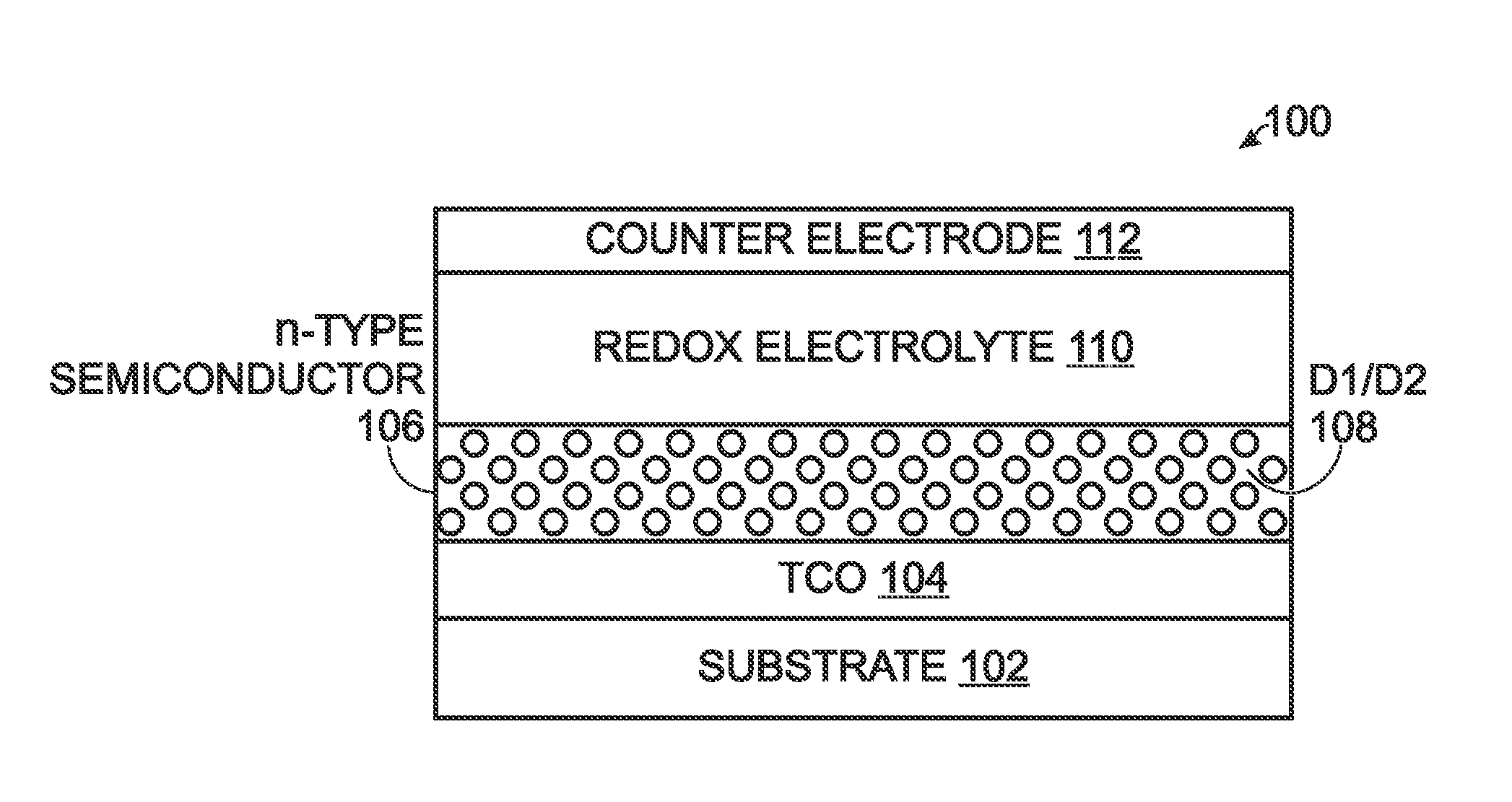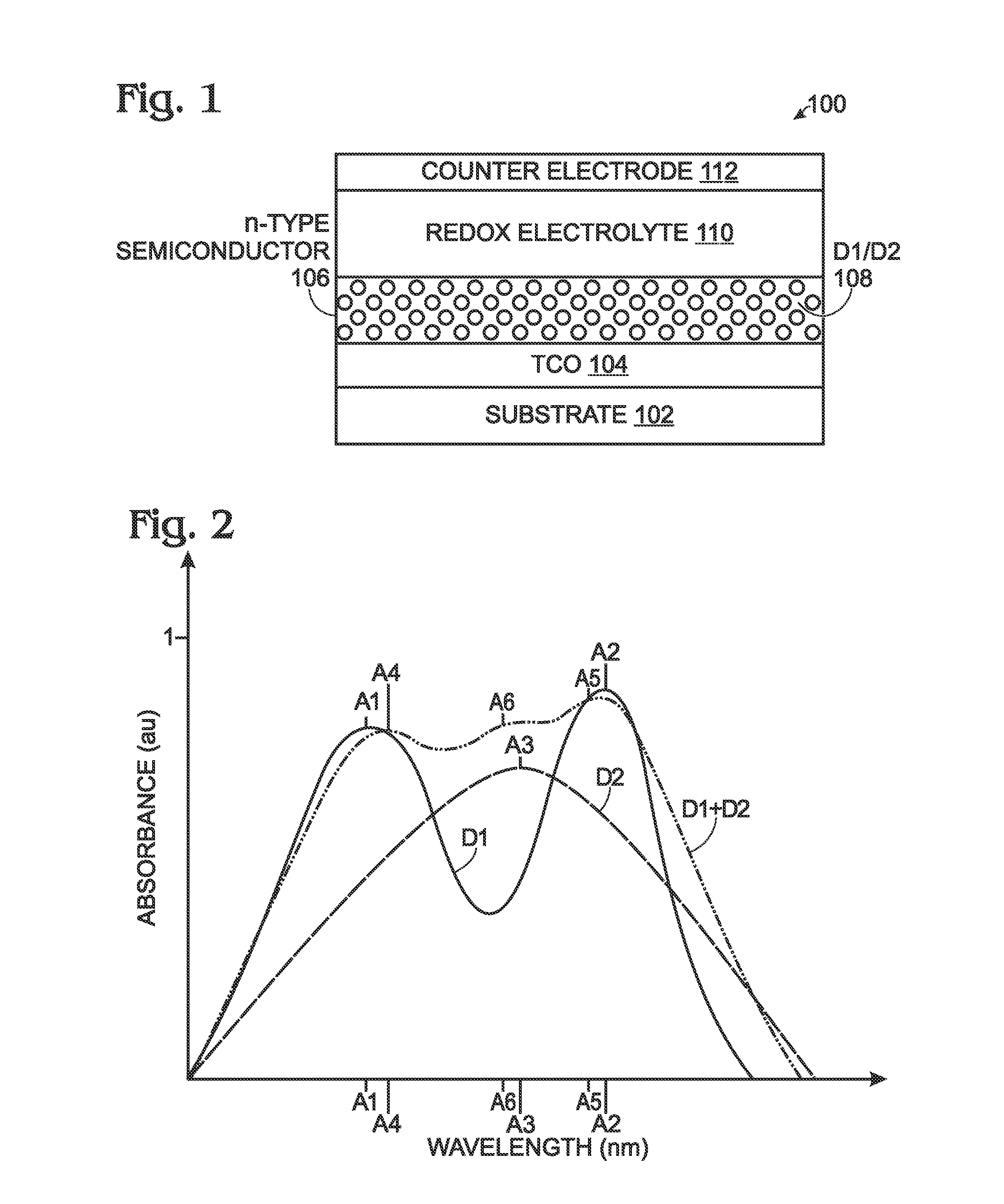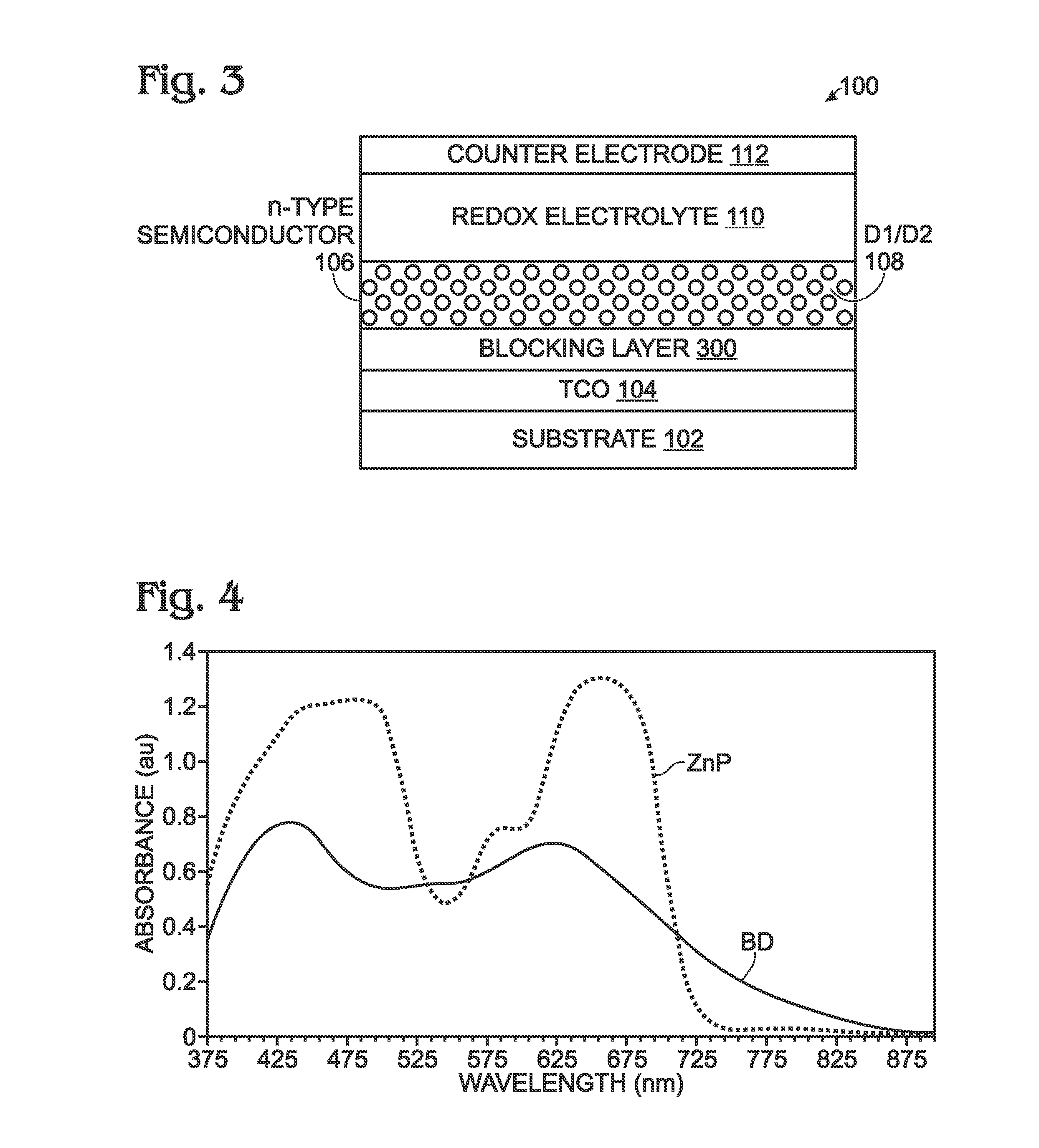Dye-Sensitized Solar Cell via Co-Sensitization with Cooperative Dyes
a solar cell and dye technology, applied in the field of dye-sensitive light absorbing chemistry, can solve the problems of many sensitizing dyes suffering from a deficiency in optical absorption beyond 700 nanometers (nm), and the choice of sensitizer is typically limited, so as to enhance the photovoltaic performance of dye-sensitized solar cells (dscs), the effect of increasing the photovoltaic response and improving the performance of dsc prototypes fabricated
- Summary
- Abstract
- Description
- Claims
- Application Information
AI Technical Summary
Benefits of technology
Problems solved by technology
Method used
Image
Examples
Embodiment Construction
[0053]FIG. 1 is a partial cross-sectional view of a co-sensitized dye-sensitized solar cell (DSC). The DSC 100 comprises a transparent substrate 102, such as glass, and a transparent conductive oxide (TCO) film 104 overlying the transparent substrate 102. Some examples of TCO materials include fluorine-doped tin oxide (FTO) and indium tin oxide (ITO). An n-type semiconductor layer 106 overlies the TCO film 104. The n-type semiconductor layer 106 is co-sensitized with a first dye (D1) and a second dye (D2), as represented by reference designator 108. That is, both dyes can independently inject electrons into the n-type semiconductor following illumination. Some examples of n-type semiconductor layer 106 materials include metal oxides of titanium (TiO2), aluminum (Al2O3), tin (SnO2), magnesium (MgO), tungsten (WOa), niobium (Nb2O5), and mixed metal oxides including more than one type of metal. The co-sensitized n-type semiconductor layer 106 may take the form of nanoparticles, nanotub...
PUM
| Property | Measurement | Unit |
|---|---|---|
| Electrical conductor | aaaaa | aaaaa |
| Absorbance | aaaaa | aaaaa |
| Transparency | aaaaa | aaaaa |
Abstract
Description
Claims
Application Information
 Login to View More
Login to View More - R&D
- Intellectual Property
- Life Sciences
- Materials
- Tech Scout
- Unparalleled Data Quality
- Higher Quality Content
- 60% Fewer Hallucinations
Browse by: Latest US Patents, China's latest patents, Technical Efficacy Thesaurus, Application Domain, Technology Topic, Popular Technical Reports.
© 2025 PatSnap. All rights reserved.Legal|Privacy policy|Modern Slavery Act Transparency Statement|Sitemap|About US| Contact US: help@patsnap.com



